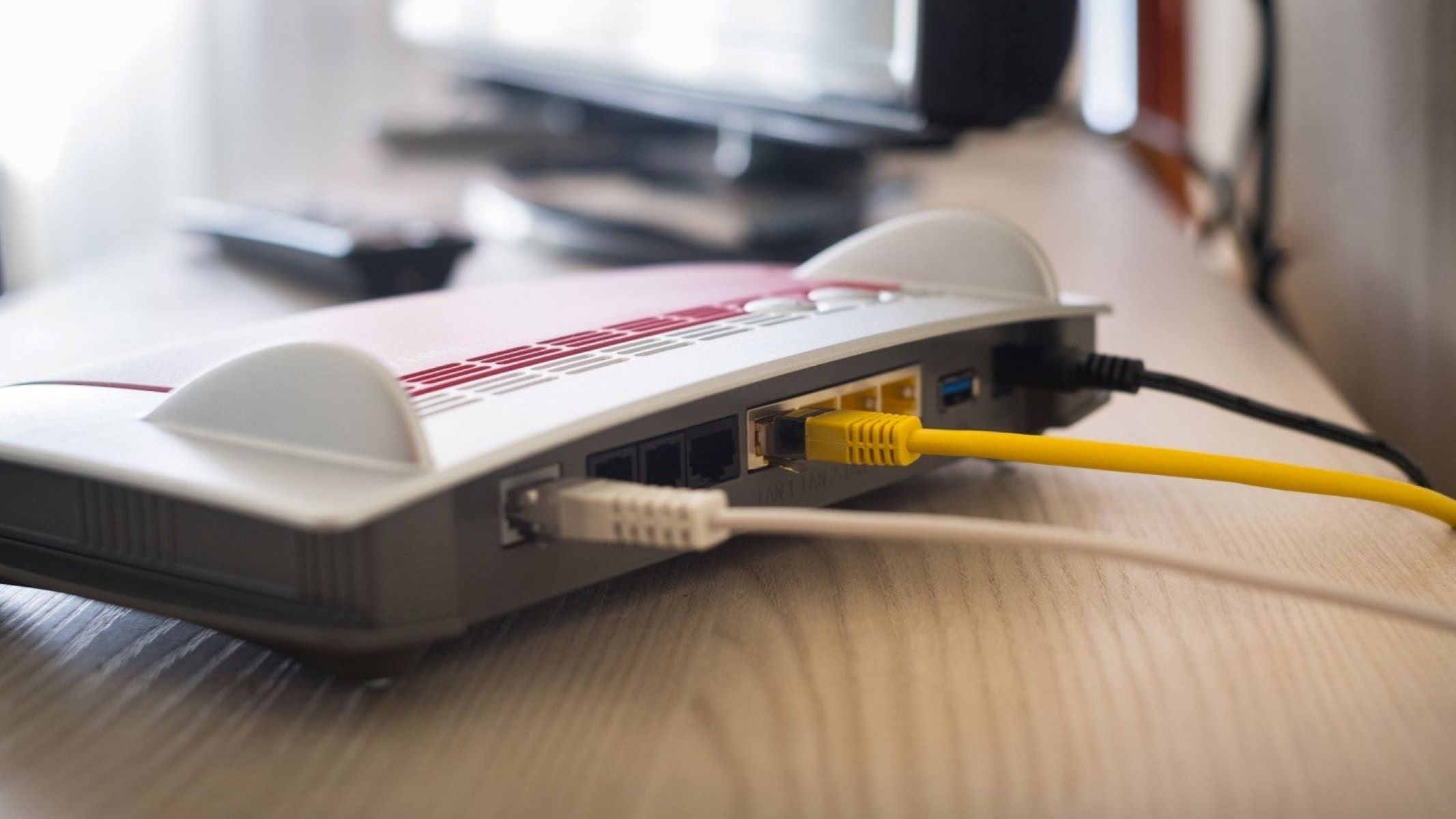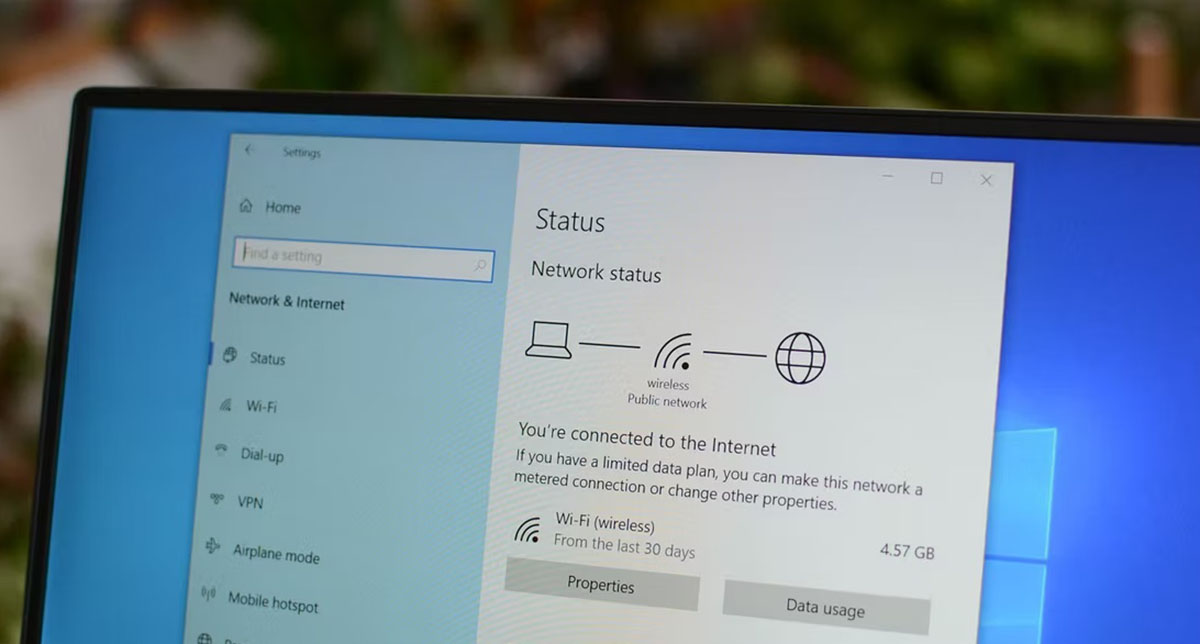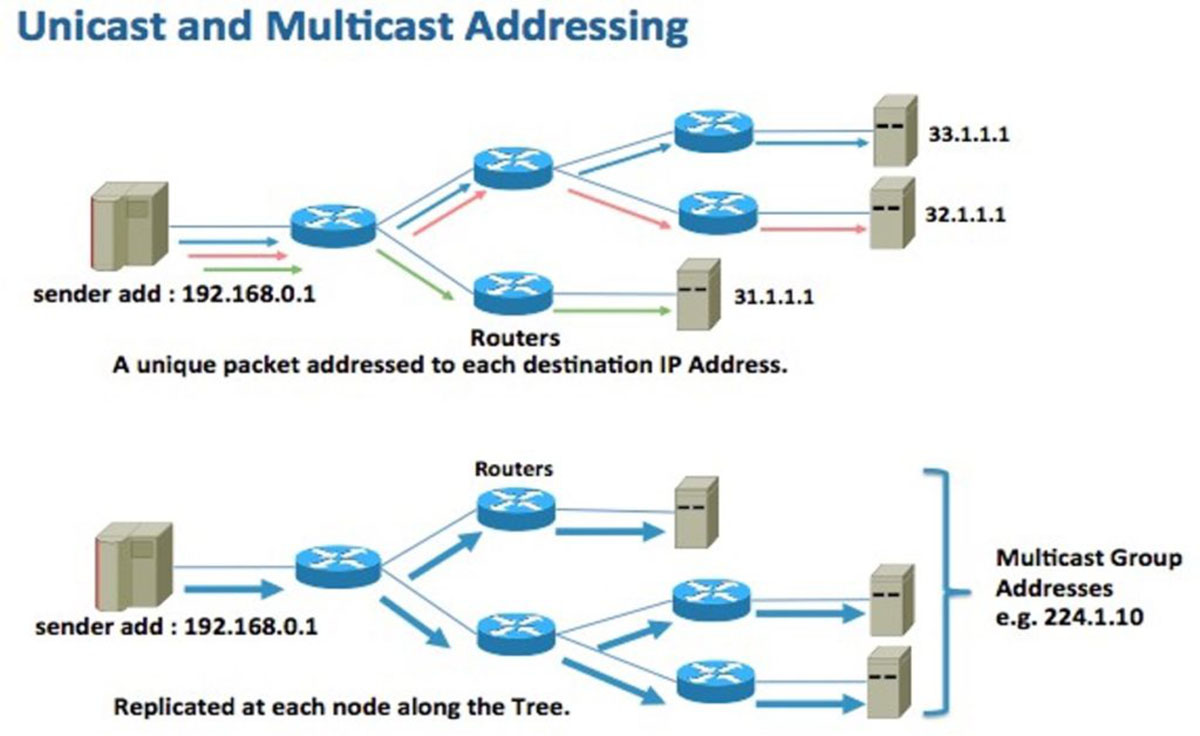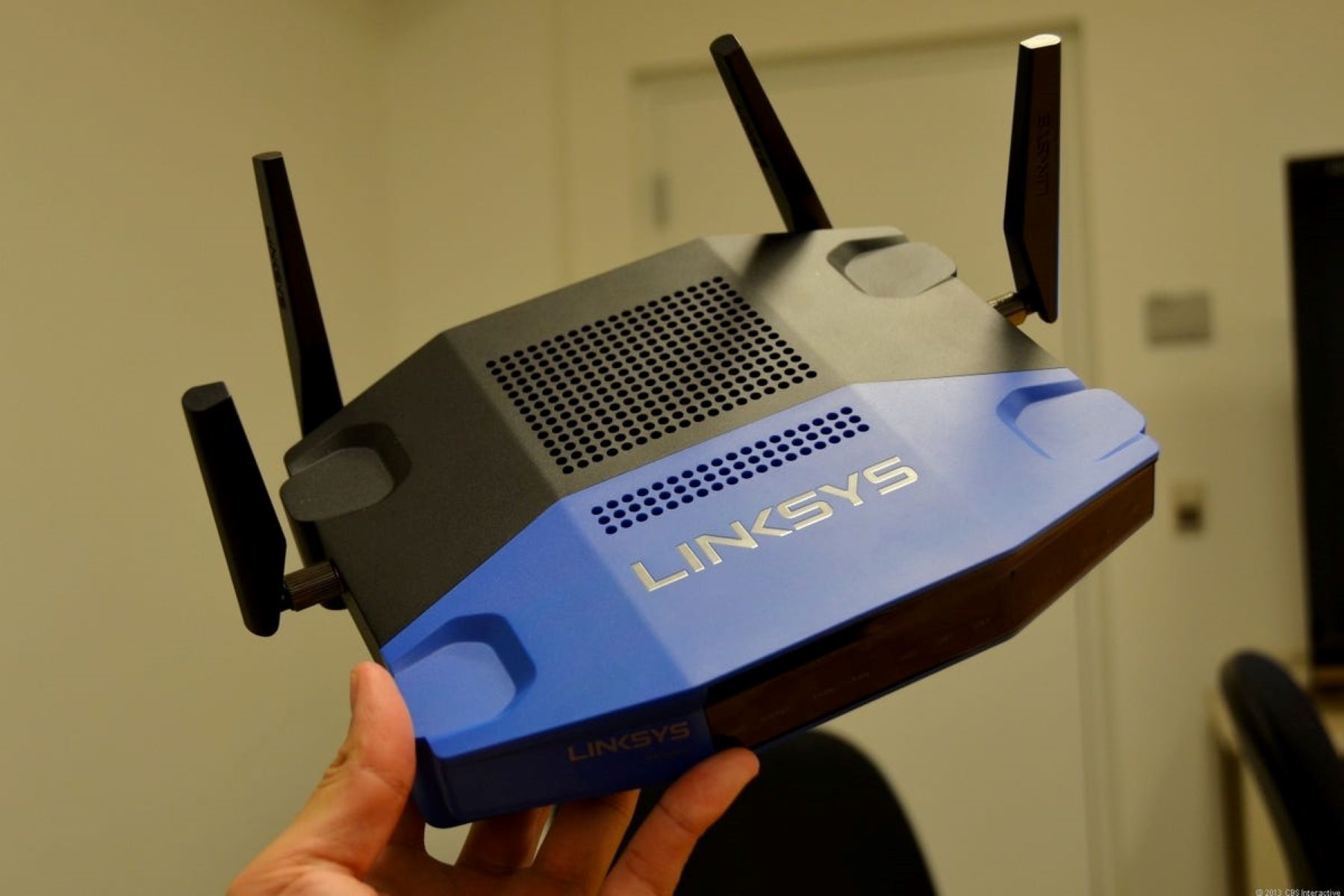Introduction
When it comes to navigating the vast landscape of the internet, we rely on routers to effortlessly direct our data packets to their intended destinations. But have you ever wondered how routers actually operate behind the scenes? One question that often arises is whether routers have their own IP addresses, and if so, how many? In this article, we will unravel the mystery behind router IP addresses and shed light on their importance in the world of networking.
To understand why router IP addresses matter, we first need to grasp the concept of an IP address itself. An IP address, short for Internet Protocol address, is a unique numerical identifier assigned to every device connected to a network. It serves as the device’s virtual “home address” on the internet, enabling data to be routed to the correct destination. Without IP addresses, our online activities would be akin to sending letters without proper addresses – they would never reach their intended recipients.
Now, let’s delve into the world of routers. A router is a networking device that connects multiple devices to form a local area network (LAN) and allows them to communicate with each other and with devices on other networks. Routers act as the traffic directors on the internet highway, constantly analyzing incoming data packets and determining the best path to their intended destinations.
So, do routers have their own IP addresses? The answer is yes. Routers operate at multiple layers of the networking stack and therefore require IP addresses to function effectively. These IP addresses enable routers to communicate with other devices on the network and establish connections with devices on external networks.
But how many IP addresses can a router have? The number of IP addresses a router can have depends on various factors, including its capabilities and configuration. Some routers may only have a single IP address, while others can support multiple IP addresses.
In the next sections, we will explore the different types of IP addresses a router can have, the default IP address for routers, and the distinction between static and dynamic IP addresses for routers. Additionally, we will provide you with guidance on how to find the IP address of your specific router model.
What is an IP address?
To understand the significance of router IP addresses, it’s important to first grasp the concept of an IP address in general. An IP address, or Internet Protocol address, is a unique numerical identifier assigned to every device connected to a network. It serves as the device’s virtual “home address” on the internet, allowing data to be routed to the correct destination.
IP addresses come in two main versions: IPv4 (Internet Protocol version 4) and IPv6 (Internet Protocol version 6). IPv4 addresses, which are more commonly used, consist of four sets of numbers separated by periods. Each set can range from 0 to 255, resulting in a total of approximately 4.3 billion possible IPv4 addresses. On the other hand, IPv6 addresses are longer and more complex, consisting of eight sets of alphanumeric characters separated by colons, providing a virtually limitless number of addresses.
The typical format of an IP address is something like 192.168.1.1 or 2001:0db8:85a3:0000:0000:8a2e:0370:7334. The former is an example of an IPv4 address, while the latter represents an IPv6 address.
IP addresses play a crucial role in facilitating communication between devices on networks. When you send a request to access a website, for example, your device’s IP address is used to identify it as the source of the request. The website’s server then uses the IP address to send the requested data back to your device.
In addition to facilitating communication, IP addresses also help in establishing the location of devices on the internet. By analyzing the IP address, you can gather information such as the geographical region or internet service provider associated with a device. However, it’s important to note that IP addresses don’t directly reveal personal information about the user of the device.
Overall, IP addresses are the backbone of the internet, enabling devices to communicate with each other and ensuring that data reaches its intended destination. Without IP addresses, the internet as we know it would be impossible.
What is a router?
In the world of networking, a router plays a crucial role in connecting multiple devices and enabling communication between them. Simply put, a router is a hardware device that forwards data packets between computer networks. It acts as a traffic director on the internet highway, directing data packets to their intended destinations.
At its core, a router is responsible for analyzing data packets and determining the best path for them to travel. It uses routing tables and protocols to make intelligent decisions about where to send the data. This process, known as routing, helps ensure that data reaches its intended destination efficiently and securely.
One of the key features of a router is its ability to connect multiple devices to form a local area network (LAN). For example, in a home network, a router may connect devices such as computers, smartphones, smart TVs, and gaming consoles, allowing them to communicate with each other and share resources like internet access and printers.
In addition to facilitating communication within a local network, routers are also responsible for directing data packets to devices on external networks. For instance, when you browse the internet, the router forwards your data packets to the appropriate destination, such as a web server, and retrieves the requested information.
Routers operate at multiple layers of the networking stack and utilize various protocols to ensure seamless communication. Some of the commonly used routing protocols include Border Gateway Protocol (BGP) for routing between different autonomous systems, and Open Shortest Path First (OSPF) for routing within a single network.
Furthermore, routers often include additional features such as built-in firewalls and network address translation (NAT) capabilities to enhance security and manage network traffic. These features help protect the devices connected to the network from unwanted external access and allow multiple devices to share a single public IP address.
In summary, a router serves as the central hub for communication between devices on a network and facilitates the flow of data packets between different networks. It plays a crucial role in enabling connectivity and ensuring that data reaches its intended destination efficiently and securely.
Do routers have IP addresses?
Yes, routers do have IP addresses. In fact, having an IP address is crucial for routers to fulfill their role in the network. A router operates at the network layer (Layer 3) of the OSI model, which requires it to have its own unique identifier, known as an IP address, for communication purposes.
Router IP addresses serve several important functions. Firstly, it allows the router to communicate with other devices on the network. For example, when a device on the local network sends a request to access the internet, the router uses its IP address to identify the source of the request and transmit the data to the appropriate destination.
In addition to internal communication, router IP addresses enable the establishment of connections with devices on external networks. When data packets are forwarded from the local network to the internet, the router uses its IP address as the source address, allowing the recipient to send the response back to the correct router.
It’s worth noting that routers can have multiple IP addresses assigned to them. These additional IP addresses can be used for various purposes, such as managing different network segments or providing services such as virtual private networks (VPNs) or port forwarding.
Furthermore, the IP address of a router can change based on network configuration. This can happen if the router is assigned a dynamic IP address by an internet service provider (ISP) or if the network administrator manually changes the IP address.
Overall, router IP addresses are an essential component of network infrastructure, enabling effective communication and data transfer between devices on the network and beyond. Without an IP address, routers would be unable to fulfill their routing responsibilities and efficiently direct data packets to their destinations.
How many IP addresses do routers have?
The number of IP addresses a router can have varies depending on its capabilities and configuration. While some routers may have a single IP address, others can support multiple IP addresses. The number of IP addresses is determined by factors such as the router’s network architecture, the type of routing protocols it supports, and the network administrator’s configuration choices.
One reason a router might have multiple IP addresses is to manage different network segments. For example, in a large enterprise network, a router may have individual IP addresses assigned to each subnet or VLAN (Virtual Local Area Network). This allows the router to direct traffic and facilitate communication between different segments of the network.
Furthermore, routers may use multiple IP addresses to provide services like virtual private networks (VPNs) or port forwarding. A VPN allows for secure remote access to a private network, and the router may need separate IP addresses for internal and external connections to manage VPN traffic effectively. Similarly, port forwarding allows external devices to connect to specific services within the network, and each forwarded port may require a unique IP address on the router.
The ability to support multiple IP addresses is often associated with more advanced router models, such as those used in enterprise or service provider environments. These routers may have dedicated hardware resources and software features designed to handle a large number of IP addresses and complex network configurations.
On the other hand, smaller or consumer-grade routers may have a single IP address assigned to them. In these cases, the router typically acts as a gateway between the local network and the internet, allowing devices on the network to share a single public IP address. This type of configuration, known as Network Address Translation (NAT), helps conserve IP addresses and provides internet access to multiple devices on the local network.
Overall, the number of IP addresses a router can have can vary widely depending on its purpose, capabilities, and network configuration. Whether it’s a single IP address or multiple IP addresses, routers play a crucial role in managing network traffic and ensuring efficient communication between devices on the network.
Different IP addresses a router can have
Routers can have different types of IP addresses depending on their specific functions and network configurations. Here are some of the commonly encountered IP addresses associated with routers:
- Management IP address: This IP address is used for router management and configuration. It allows administrators to access the router’s administrative interface, typically through a web browser or command-line interface. The management IP address is used to configure network settings, security parameters, and other router functionalities.
- Internal IP address: Also known as the “LAN IP address,” the internal IP address is assigned to the router’s internal interface that connects to the local area network (LAN). Devices within the LAN use this IP address as their default gateway to access the internet. It allows the router to forward traffic between the local network and external networks.
- External IP address: Sometimes referred to as the “WAN IP address” or “public IP address,” the external IP address is assigned to the router’s external interface that connects to the internet. This IP address is provided by the internet service provider (ISP) and is visible to devices outside of the local network. It uniquely identifies the router to the internet and allows it to send and receive data packets to and from external networks.
- Virtual IP address: A virtual IP address is an additional IP address assigned to a router or network device. It is often used for load balancing or high availability purposes. In load balancing, multiple routers can share the same virtual IP address to distribute network traffic evenly across them. In high availability configurations, a virtual IP address is used as a failover mechanism, allowing another router to take over if the primary router fails.
- Loopback IP address: The loopback IP address, commonly set as 127.0.0.1 for IPv4 or ::1 for IPv6, is a special IP address that allows a device to send traffic to itself. Routers may have loopback IP addresses configured for various reasons, such as testing network services or creating logical interfaces for internal communication purposes.
These are just a few examples of the different IP addresses a router can have. The specific IP addresses used by a router depend on its configuration, the network architecture, and the intended functionalities. By assigning different IP addresses to specific interfaces or using virtual IP addresses, routers can effectively handle network traffic, provide services, and establish seamless communication between devices on the local network and the wider internet.
Default IP address for routers
When setting up a new router, it often comes preconfigured with a default IP address. This default IP address allows users to access the router’s administrative interface and configure its settings. While different router manufacturers may use different default IP addresses, there are a few common default IP addresses that are widely used in the industry.
One of the most commonly used default IP addresses is 192.168.1.1. This IP address, which falls under the private IP address range specified by the Internet Engineering Task Force (IETF), is frequently used as the default gateway for many home routers. It provides access to the router’s administration page, where users can set up their network, configure security settings, and manage connected devices.
Another frequently seen default IP address is 192.168.0.1. Like 192.168.1.1, this IP address is also part of the private IP address range and is often used as the default gateway for many routers. It serves the same purpose as 192.168.1.1, allowing users to access and configure their router’s settings.
It’s worth noting that not all routers use these default IP addresses. Router manufacturers may choose other default IP addresses to avoid conflicts with existing networks. Some routers might use IP addresses starting with 10.0.0.0 or 192.168.2.1 as their default addresses, for example.
In addition to the default IP address, routers also typically have default credentials, such as a default username and password, to access the administrative interface. It’s important to change these default credentials to ensure the security of the network, as leaving them unchanged can pose a risk of unauthorized access.
If you are unsure about the default IP address of your router, you can consult the documentation that came with the router or check the manufacturer’s website for the specific model. Another option is to use network diagnostic tools or software that can discover and display the IP addresses of devices connected to your network.
Remember, once you access the router’s administrative interface, you can set a custom IP address, subnet mask, and other network settings to suit your needs. Customizing these settings allows you to create a network environment that works best for your specific requirements.
In summary, the default IP address for routers serves as the entry point to their administrative interface, providing users with the ability to configure network settings. Common default IP addresses like 192.168.1.1 and 192.168.0.1 are widely used, but it’s always a good idea to refer to the documentation or the manufacturer’s website for the accurate default IP address of your router.
Static vs Dynamic IP addresses for routers
When it comes to assigning IP addresses to routers, there are two primary methods: static IP addressing and dynamic IP addressing. Each method has its own advantages and considerations, and the choice between static and dynamic IP addresses depends on the specific requirements of the network.
Static IP addresses: A static IP address is manually assigned to a router and remains constant unless changed by the network administrator. With a static IP address, the router always uses the same IP address to communicate on the network. This is useful in scenarios where the router needs to provide services that need to be consistently available, such as hosting a website or running network services that require a fixed IP address.
One of the advantages of using static IP addresses is that it provides stability and predictability. Since the IP address remains the same, devices on the network can easily locate and connect to the router without any changes in network configurations. Additionally, static IP addresses can be beneficial for network security, as they reduce the risk of unauthorized access and provide more control over network traffic.
However, there are some drawbacks to using static IP addresses. Assigning static IP addresses can be time-consuming and requires manual configuration for each device on the network. It also requires careful planning to ensure that IP address conflicts do not occur, especially when managing a large number of devices. Furthermore, if there is a need to change network settings or reorganize the network, it may require reconfiguring the IP addresses of all devices manually.
Dynamic IP addresses: In contrast to static IP addresses, dynamic IP addresses are automatically assigned to routers by a Dynamic Host Configuration Protocol (DHCP) server. The DHCP server dynamically leases IP addresses to devices on the network for a specified period of time. When the lease expires, the IP address is released back to the DHCP server and can be assigned to another device.
Dynamic IP addressing offers several advantages, especially in networks with a large number of devices. It simplifies the network configuration process, as devices can be set to automatically obtain IP addresses from the DHCP server. This eliminates the need for manual IP address assignment and reduces the risk of IP address conflicts.
Another benefit of dynamic IP addressing is flexibility. It allows for easier network expansion and device management, as new devices can be seamlessly added to the network without the need for manual configuration. Additionally, dynamic IP addressing can be beneficial for networks where devices are regularly connecting and disconnecting, such as in a Wi-Fi hotspot or a dynamic network environment.
However, dynamic IP addressing also has some considerations. The main drawback is that the IP address of the router can change over time. While this may not be an issue for regular internet usage, it can pose challenges when hosting services that rely on a specific IP address. Additionally, if the DHCP server becomes unavailable, devices may not be able to obtain IP addresses, resulting in network connectivity issues.
In summary, the choice between static and dynamic IP addresses for routers depends on the specific requirements of the network. Static IP addresses provide stability and control but require manual configuration, while dynamic IP addresses offer flexibility and ease of management but may result in IP address changes over time. Understanding the advantages and considerations of each method can help network administrators make informed decisions based on the unique needs of their network.
How to find the IP address of your router
Finding the IP address of your router is essential for accessing its administrative interface and configuring its settings. There are a few methods you can use to determine the IP address of your router:
1. Check the router documentation: The easiest way to find the IP address of your router is by referring to the manufacturer’s documentation. The documentation often includes the default IP address and login credentials for accessing the router’s administrative interface.
2. Use the command prompt or terminal: If you have a computer connected to the same network as your router, you can use the command prompt (in Windows) or terminal (in macOS or Linux) to find the IP address. Open the command prompt or terminal and enter the command “ipconfig” (for Windows) or “ifconfig” (for macOS or Linux). Look for the “Default Gateway” entry, which will display the IP address of your router.
3. Check the router settings: If you have access to the router’s configuration settings, you can find the IP address there. Open a web browser and enter the default IP address for the router (such as 192.168.1.1 or 192.168.0.1) in the address bar. You will be prompted to enter the login credentials for the router. Once logged in, you can navigate through the router’s settings to find the IP address.
4. Use a network scanning tool: There are various network scanning tools available that can discover and display the IP addresses of devices connected to your network. These tools provide a comprehensive view of all devices on the network, including the router. Some popular tools include Angry IP Scanner, Advanced IP Scanner, or Nmap.
5. Check your device’s network settings: If you have a device connected to the same network as your router, you can check its network settings to find the IP address. For example, on Windows, you can navigate to the “Network and Sharing Center” and click on your network connection. From there, click on the “Details” button to see the network details, including the Default Gateway, which is the IP address of your router.
Remember to note down the IP address of your router once you find it. This information will be essential for accessing the router’s administrative interface in the future and making any necessary configuration changes.
In case the IP address of the router has been changed from the default, you may need to reset the router to its factory settings. This can be done by pressing and holding the reset button on the router for a few seconds. However, keep in mind that doing this will erase any custom settings and configurations made on the router.
By using one of these methods, you can easily find the IP address of your router. This information will enable you to access and customize the router’s settings, ensuring optimal network performance and security.
Conclusion
Understanding the role of IP addresses in routers is essential for anyone looking to optimize their network performance and configuration. Routers play a vital role in directing data packets and connecting devices within a network, and their IP addresses serve as unique identifiers in this process.
We have delved into the world of IP addresses, learning that they are crucial for devices to communicate and navigate the internet. Without IP addresses, our online activities would come to a halt, as data packets wouldn’t know where to go or how to find their intended recipients.
We have also explored the various IP addresses that routers can have, including management IP addresses for configuration purposes, internal and external IP addresses for internal and external communication, virtual IP addresses for load balancing, and loopback IP addresses for self-communication purposes.
Additionally, we compared static and dynamic IP addressing for routers. Static IP addresses provide stability and control but require manual configuration, while dynamic IP addresses offer flexibility and ease of management but may result in IP address changes over time.
Finding the IP address of your router can be crucial for accessing its administrative interface and configuring its settings. Whether through router documentation, the command prompt, router settings, network scanning tools, or checking device network settings, there are multiple methods to obtain the IP address.
In conclusion, understanding IP addresses and their significance in routers is fundamental for optimizing network performance, configuring network settings, and ensuring seamless communication between devices. By familiarizing ourselves with the different types of IP addresses that routers can have and knowing how to find the IP address of our own router, we can take control of our network and create the optimal environment for our connectivity needs.

























